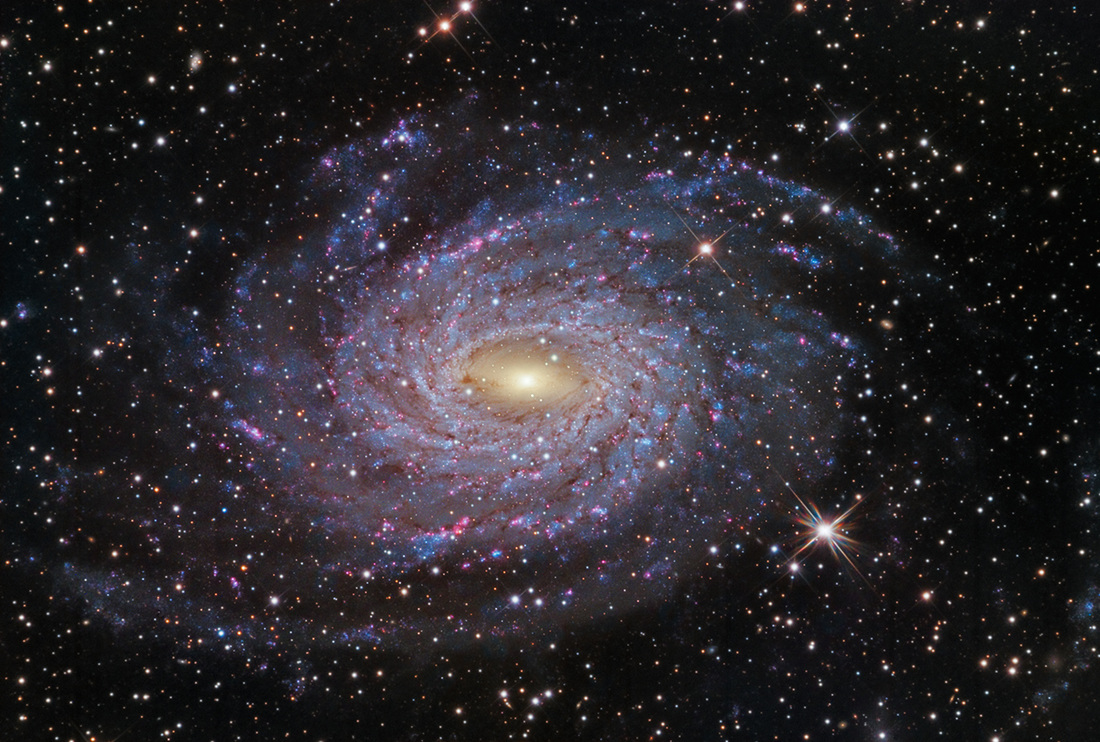NGC 6744 is a very interesting galaxy. According to Principal Galaxy Catalog, whose distance estimates are not very reliable, NGC 6744 is some 21 million light-years away and is as bright as 2.4 galaxies like the Milky Way. But according to today's caption, NGC 6744 is some 30 million light-years distant, which must make it brighter (and larger) still. Fascinating!
Today's APOD loks great, and I very much admire the detailed portrait of the huge spiral-shaped disk. Actually, I'd say that the spiral system is not very well defined, so that the disk can be described as almost flocculent instead.
NGC 4414 is an example of a flocculent galaxy.
Although NGC 6744 looks great in Martin Pugh's image, it looks quite different in the 1981 UBV picture by James D Wray. Wray did not "tweak" the brightness of different parts of the galaxy, and as a result, the bright parts of the galaxy look bright and the faint parts look faint. Consequently, in James D Wray's image, NGC 6744 looks like a yellow bar, surrounded by some scattered faint blue knots. Admittedly we can just barely make out some spiral features as well.
NGC 6744. Photo: Warren Keller.
M101. Photo: Robert Gendler.
It is interesting to compare NGC 6744 with well-known galaxy M101. Both galaxies are huge, with a huge spiral pattern surrounding a comparatively small yellow bulge or bar. Both look somewhat similar in James D Wray's atlas: Both sport a smallish yellow center surrounded by widely scattered blue blobs, far more prominent in M101 than in NGC 6744, though. Both galaxies are relatively nearby in view of the fact that they don't belong to the Local Group: NGC 6744 is at a distance of some 30 million light-years, considerably closer than the Virgo Cluster, and M101 is 21 million light-years away according to
Wikipedia. Also according to Wikipedia, the disk of M101 is ~170,000 ly in diameter, which is gargantuan indeed.
But which galaxy is the brightest? According to my software, Guide, NGC 6744 is an 8.4 mag galaxy, and according to today's caption, the galaxy is some 30 million light-years away from the Earth. Again according to Guide, M01 is a 7.5 mag galaxy, seen from a distance of 21 million light-years.
So, Art, or some other math whiz, which galaxy is the intrinsically brightest? NGC 6744 or M101?
Ann

